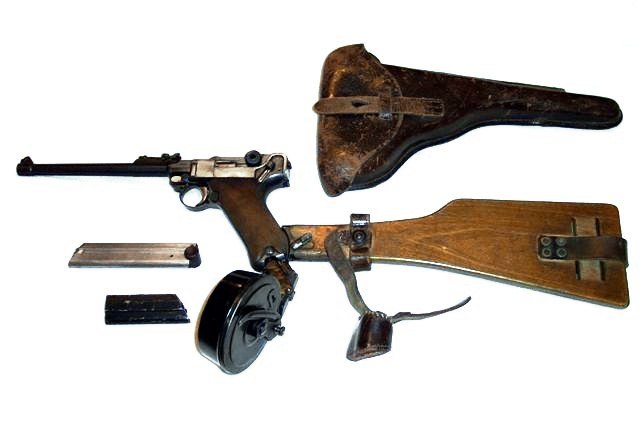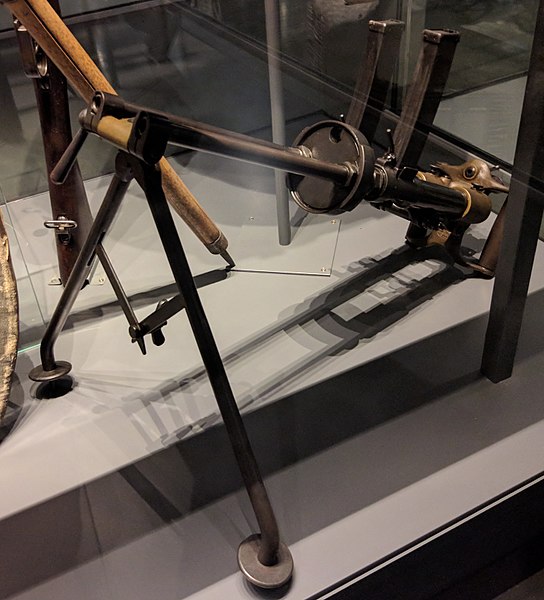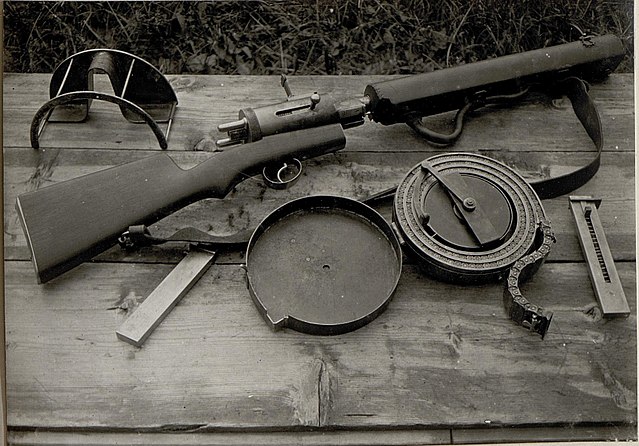The FN P90 is a submachine gun chambered for the 5.7×28mm cartridge, also classified as a personal defense weapon, designed and manufactured by FN Herstal in Belgium. Created in response to NATO requests for a replacement for 9×19mm Parabellum firearms, the P90 was designed as a compact but powerful firearm for vehicle crews, operators of crew-served weapons, support personnel, special forces, and counter-terrorist groups.
A disassembled PS90 carbine, showing the major component groups. The standard P90 disassembles into similar component groups: 1. hammer group, 2. barrel and optical sight group, 3. butt plate, 4. magazine, 5. moving parts group, 6. frame and trigger group
The P90's unique magazine has a capacity of 50 rounds, and it fits flush with the weapon's frame
Three of the small-caliber, high-velocity 5.7×28mm cartridges as used in the P90. The left cartridge has a plain hollow tip, the center cartridge has a red plastic V-max tip, and the right cartridge has a blue plastic V-max tip
The P90 magazine feed lips
A submachine gun (SMG) is a magazine-fed automatic carbine designed to fire handgun cartridges. The term "submachine gun" was coined by John T. Thompson, the inventor of the Thompson submachine gun, to describe its design concept as an automatic firearm with notably less firepower than a machine gun. As a machine gun must fire rifle cartridges to be classified as such, submachine guns are not considered machine guns.
A Mini Uzi and a Heckler & Koch MP5K, two common submachine guns
Artillery Luger P08 pistol with snail-drum magazine and removable stock.
The FIAT Mod.1915 is considered by some to be the first submachinegun.
A Standschütze Hellriegel M1915, the first submachinegun with a buttstock, seen here with stick and drum magazines








